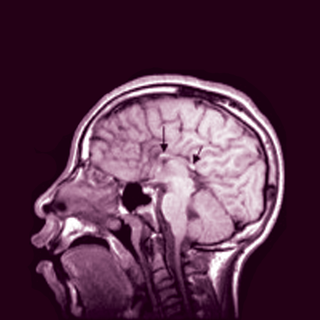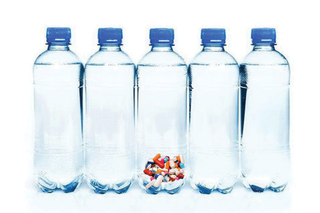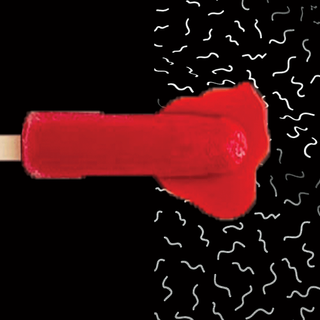
There Are Human Drugs in Your Drinking Water Supply
The pollution is causing major problems for biodiversity and public health.

Human drugs are in the world’s water supply — in its oceans, and in its groundwater. This has been known for a while, but the extent of the contamination’s effects are only starting to become clear. For instance, in Australia, “Recent modeling shows that a platypus living in a contaminated stream in Melbourne is already likely to ingest more than half a recommended adult dose of antidepressants every day,” reports Rebecca Gibbs in a recent article for The Atlantic.
That’s right. An awkward, semiaquatic creature who after thousands of years still doesn’t realize it’s a mammal is blissed out right now because we can’t figure out how to keep our medicines out of its semi-home. (Actually, maybe we’re doing it a favor. Those feel like some tricky and deep-seated identity issues to work through.)
The point is, human drugs — from psychiatric medication, to antibiotics, to hormonal birth control — have been pouring into the Earth’s waterways unchecked for at least a decade now, typically through one of three ways: from pollution from pharmaceutical manufacturing, from unmetabolized drugs in the excreted waste of increasingly medicated people, or from improper disposal of drugs no longer needed or expired, such as by flushing unused drugs down the toilet.
Related on The Swaddle:
Your Dry Cleaned Clothing Is Trying to Kill You
The amount of pharmaceuticals in the water varies, but aside from large-scale manufacturing pollution (which is not uncommon), most experts agree water only contains traces of human drugs. The problem is we have no idea what these traces might add up to, or do.
“The biggest concern is the stew effect,” Scott Dye, of the Sierra Club’s Water Sentinels program, told Scientific American. “Trace amounts of this mixed with trace amounts of that can equal what? We don’t know.”
We have hints of effects, though, from laboratory tests on animals. “Amphetamines change the timing of aquatic insect development. Antidepressants impede cuttlefish’s learning and memory, and cause marine and freshwater snails to peel off rocks. Drugs that affect serotonin levels in humans cause shore crabs to exhibit ‘risky behavior,'” reports Gibbs, who goes on to explain how Prozac leaves shrimp more vulnerable to predators, and how anxiety medications affect the migratory patterns of Atlantic salmon.
Not only do these medications affect wildlife (and likely contribute to humanity’s current decimation of it), they also risk bioaccumulation, a process that could allow these traces to build up in animals and return to us in large amounts via our food supply. Bioaccumulation (also known as biomagnification) is the absorption of a chemical, or drug, by an organism, faster than it can metabolize and excrete it. Which means, when that organism is consumed by another, the build-up is transferred to the consuming party, adding to the build-up of the chemical that’s already present in them. In this way, traces of medications and chemicals become doses the farther up the food chain you go, potentially all the way to humans. Studies of wild fish have provided evidence that human drugs can bioaccumulate in this way.
Even if we’re not directly consuming trace and/or bioaccumulated drugs in our drinking water and food supply, we’re affected by another fallout from drug-polluted waters: antibiotic resistance. In 2017, a major study “found ‘excessively high’ levels of antibiotic and antifungal drug residue in water sources in and around a major drug production hub in Hyderabad, as well as high levels of bacteria and fungi resistant to those drugs,” reported Scroll.in at the time. This type of pollution breeds strains of microbes that are increasingly resistant to the drugs available to treat them once they infect humans, and the effect is already being felt: Drug-resistant diseases currently cause at least 700,000 deaths globally a year, a number that is set to reach 10 million deaths a year by 2050, according to “No Time to Wait: Securing the Future from Drug Resistant Infections,” a recent UN report.
Unfortunately, like many countries, India lacks a clear policy toward ensuring our waterways remain free of pharmaceutical pollutants.
The Supreme Court has identified access to clean water as a fundamental human right, but most regulations are aimed at ensuring the access part; India lacks legal definitions of clean and potable water, according to a 2017 review of the country’s water policies.
Perhaps it’s time to also discuss what constitutes clean, and how to ensure it. The water filters that most of us rely on already aren’t up to the challenge of human pharmaceuticals; studies have shown reverse osmosis (RO) water filters can remove only some drugs from drinking water, and while carbon water filters advertise to do the same, there has been no independent studies to support the claim. So, we need to figure out a way to prevent drugs from entering the water supply at all. If we don’t, we can expect a future of stoned wildlife and roofie-ing ourselves.
Liesl Goecker is The Swaddle's managing editor.
Related


Stigma Has Rendered Period Sex Gross. But It’s Actually Good For You.
